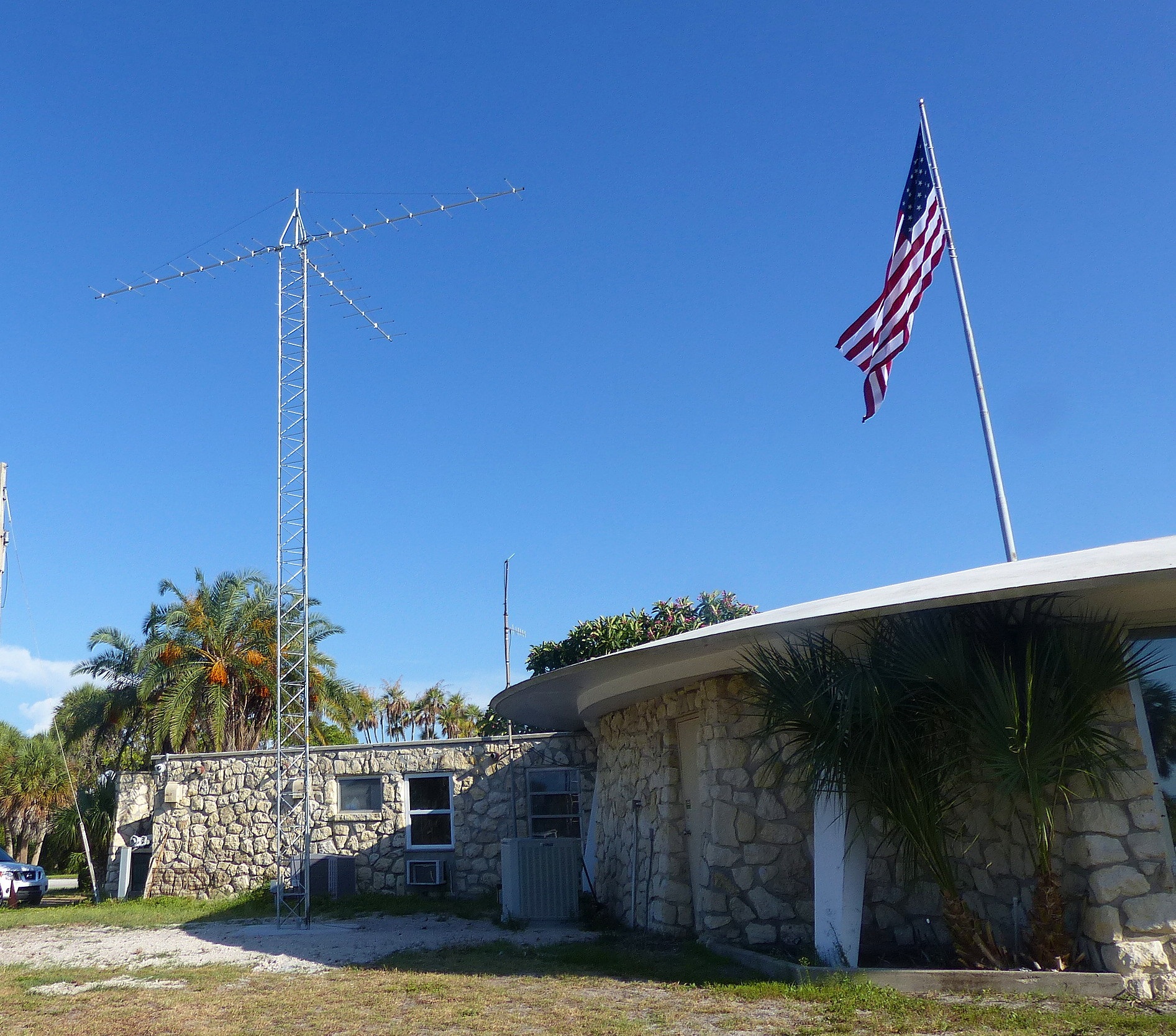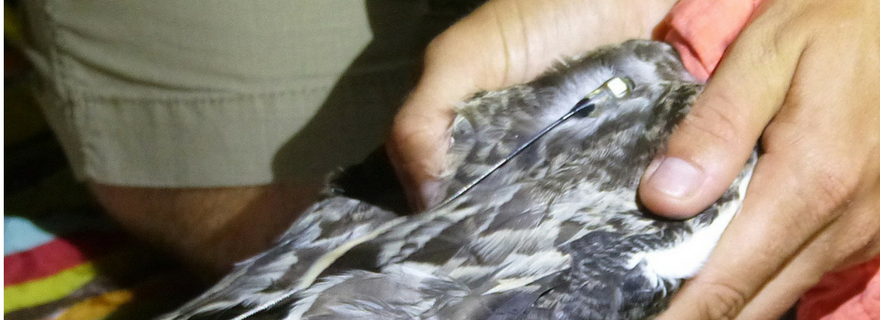Scientists first began tracking bird migrations in 1803 when John James Audubon tied a string around the leg of a bird before it flew south for the winter – and saw it again when the bird returned the next summer.
Scientists still use tags, now metal bands in various colors with coded identifications, to identify individual birds, but results are limited because they require that someone to get close enough to a bird to photograph the band.
The latest technology uses tiny electronic tags that emit signals picked up by towers within a 12-mile radius. The system has been in use at Fort De Soto Park since earlier this year and another will be built at Florida Conservation and Technology Center in Apollo Beach next year.
The Motus (Latin for “movement”) Wildlife Tracking System is an international network that uses a coordinated array to track the movement and behavior of small flying organisms. Motus tracks animals (birds, bats, and large insects) with digitally encoded radio transmitters – or “nano-tags” — that broadcast signals several times each minute. When results from multiple stations are combined, the array can track an individual animal for thousands of miles.
Based in Ontario, Motus is a partnership between Bird Studies Canada, Acadia University and collaborating researchers and organizations around the world. Nearly 400 tracking towers have been installed, primarily in Canada, the US and Puerto Rico.
Until earlier this year, the closest station to Tampa Bay was north of Tallahassee, even though the region is internationally recognized as an important “stopping point” for migrating birds. The addition of two towers along our Gulf Coast – including a third possible tower near downtown Tampa and McKay Bay – has the potential to significantly increase knowledge of how birds travel along the Gulf Coast, said Elizabeth Forys, an Eckerd College professor and coordinator of the Fort De Soto tower.
Along with the local tracking stations, two new systems were set up earlier this year near the Suwannee River and St. Marks in north Florida to track birds as they migrate or nest in those areas.

In spite of technical issues and Hurricane Irma that kept the tower down for most of the fall migration, the Motus tower at Fort De Soto documented nine nano-tagged birds flying through, including purple martins, thrush species from Canada and even one red knot that winters in Pinellas County, Forys said.
The tracking stations are based on a $30 piece of computer equipment that connects to the internet and reports birds as they are tracked. The tags cost about $150 each, are glued between the bird’s shoulder blades and only weigh about 0.3 grams so they don’t interfere with the animal’s activities.
Kara Lefevre at Florida Gulf Coast University had the nano-tags but not the birds to tag them, so she teamed up with Forys to tag black skimmers at Fort DeSoto. Black skimmers are listed as threatened but regularly nest on Pinellas County beaches.
Lorraine Margeson, an environmental advocate who monitors nesting birds on Port Tampa Bay’s dredge islands, approached Pinellas County Parks Director Paul Cozzie about building a Motus tower at Fort De Soto. “Paul was instrumental in getting the funding and Pinellas really deserves credit for stepping up to this project,” Margeson said.
Tampa Electric also jumped at the opportunity to put a tracking station at its Center for Conservation in Apollo Beach when Margeson asked for help. “We already have researchers from the Florida Aquarium, Fish and Wildlife Conservation Commission and the University of Florida onsite full-time so they can download information as needed,” said Stanley Kroh, TECO’s environmental manager.

Photo by Lorraine Margeson
With the detailed data available through Motus, scientists can more clearly identify when, where and what birds need to survive what arduous migrations of up to 9,000 miles or to nest successfully on local beaches. “There’s a lot we don’t know,” Forys said. “For instance, we have black skimmers here now, but they’re not the ones that nested here this summer – these came from Long Island.”
Hopefully, Motus towers in other locations will show where the Pinellas skimmers spend their winters – and where our winter visitors go when they leave here.
For more information, visit www.motus.org.
